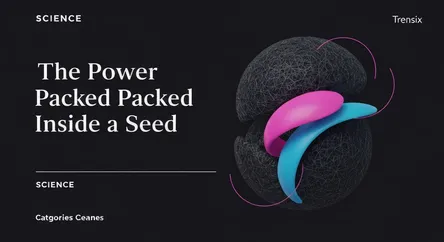Science
The Power Packed Inside a Seed

Discover the vital role of seeds, from their basic biological function to their fundamental impact on global food supply, biodiversity, and human life.
What is it?
A seed is the embryonic stage of a plant's life cycle. It is a small, self-contained unit of reproduction for flowering and cone-bearing plants. A seed consists of three main parts: the embryo (a tiny, undeveloped plant), the endosperm (a food supply of starch, oil, and protein), and a protective outer seed coat. Formed after fertilization, a seed contains all the genetic information and initial nutrients necessary to develop into a new plant under the right conditions, such as adequate water, oxygen, and temperature.
Why is it trending?
While ancient, the importance of seeds is a perpetually relevant topic, especially with growing global concerns over food security, biodiversity, and climate change. Discussions around genetically modified organisms (GMOs), heirloom seed preservation, and sustainable agriculture keep seeds in the spotlight. Initiatives like global seed vaults, designed to protect plant diversity from catastrophic events, highlight their critical value. As the world's population grows, the efficiency, resilience, and nutritional value of seeds are more crucial than ever for sustaining communities and ecosystems.
How does it affect people?
Seeds are the foundation of human civilization and daily life. They are the primary source for most of the world's food, including staple crops like rice, wheat, and corn. Fats and oils are derived from crushed seeds like sunflower and canola, while many proteins come from beans and nuts. Beyond food, seeds provide fibers for clothing like cotton, beverages such as coffee and cocoa, and various spices. Economically, agriculture and food production, which all begin with a seed, are massive global industries that support livelihoods worldwide.